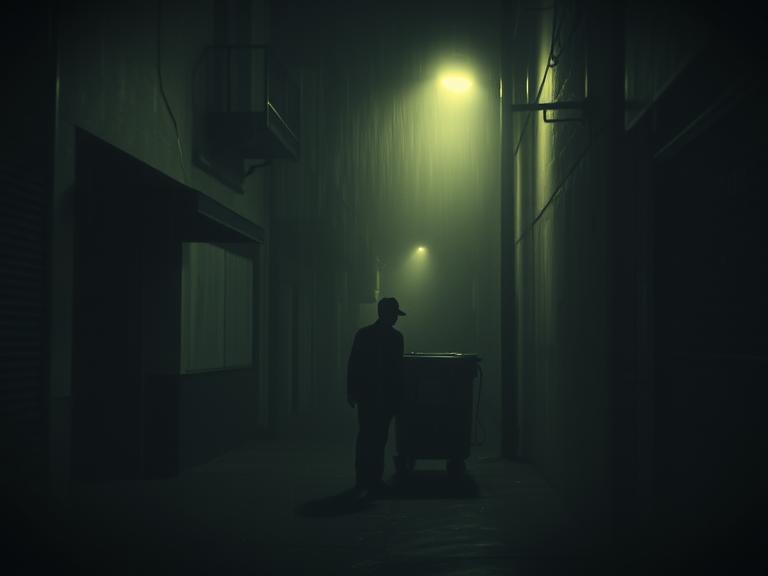Edward Theodore Gein. The name itself conjures images of rural isolation, unimaginable depravity, and the unsettling realization that true horror can sometimes be found not in the realm of the supernatural, but in the darkest corners of the human psyche. Born in 1906, Gein lived a secluded life on a remote farm in Plainfield, Wisconsin, dominated by his overbearing and religiously fanatical mother, Augusta. Following her death in 1945, Gein’s already eccentric behavior spiraled into a macabre obsession that would culminate in acts so bizarre and gruesome they would forever alter the landscape of American horror.
Gein’s world was a lonely one. His father was an alcoholic, and his mother, while the central figure in his life, instilled in him a fear of the outside world and a rigid, fundamentalist worldview. He had limited social interaction and remained a bachelor, his life largely confined to the decaying farmhouse and his mother’s strict doctrines. After her death, Gein’s grip on reality seemed to loosen further.
The quiet isolation of the Plainfield farm masked a horrifying secret that was brought to light in November 1957, when local hardware store owner Bernice Worden disappeared. Gein was one of the last people seen with her, and when authorities investigated his home, they were met with a scene of unimaginable horror. What they discovered was not just a murder scene, but a macabre collection of human remains, meticulously fashioned into household items and personal effects.
Bernice Worden’s headless body was found hanging in a shed on Gein’s property. But this was just the beginning of the nightmare. Inside the farmhouse, investigators unearthed a gruesome inventory: chairs upholstered with human skin, bowls made from skulls, a lampshade crafted from a human face, leggings made from human leg skin, a corset made from a female torso, and numerous other artifacts fashioned from human bones and flesh. Gein had become a real-life ghoul, desecrating graves and transforming the deceased into grotesque trophies.
Further investigation revealed that Gein had also murdered Mary Hogan, a tavern owner who had disappeared in 1954. Her skull was found in his home. Gein confessed to both murders and admitted to regularly exhuming bodies from local graveyards, bringing them back to his farmhouse, and using their remains for his bizarre creations.
The sheer strangeness and depravity of Gein’s crimes sent shockwaves across the nation and left an indelible mark on the American psyche. The idea that such horror could exist in the seemingly placid heartland was deeply unsettling. While the sensationalism of the case certainly played a role, it was the unique and utterly bizarre nature of Gein’s actions that truly captured the public’s imagination – and the imaginations of burgeoning horror writers and filmmakers.
The case of Ed Gein, with its elements of rural isolation, a disturbed individual living on the fringes of society, grave robbing, and the creation of grotesque objects from human remains, became a potent source of inspiration for several seminal works of American horror:
Psycho (1960): Robert Bloch’s novel, published in 1959, and Alfred Hitchcock’s iconic film adaptation are perhaps the most direct and immediate responses to the Gein case. The character of Norman Bates, a socially awkward loner with a controlling deceased mother and a penchant for keeping her corpse, bears striking similarities to Gein. Bates’s descent into madness and his horrific acts of violence, including keeping his mother’s body and dressing in her clothes, echo the disturbing details that emerged from Plainfield. While Bloch took creative liberties, the foundational elements of the story were undeniably influenced by the real-life horrors of Ed Gein.
The Texas Chain Saw Massacre (1974): Tobe Hooper’s visceral and terrifying film also draws heavily from the Gein case. The character of Leatherface, a hulking figure who wears a mask made of human skin and wields a chainsaw, is a direct descendant of the real-life ghoul of Plainfield. The film’s nightmarish farmhouse, filled with furniture and decorations made from human bones, mirrors the horrifying discoveries made in Gein’s home. The film’s raw and unrelenting depiction of primal horror tapped into the deep unease that Gein’s story had unearthed.
Deranged (1974): This Canadian-American exploitation film offers a more direct and fictionalized account of the Ed Gein story, closely following the timeline of his crimes and the bizarre nature of his activities. While less artistically acclaimed than Psycho or The Texas Chain Saw Massacre, Deranged explicitly presented a fictionalized version of Gein’s life and crimes for a horror audience.
The Silence of the Lambs (1988 novel, 1991 film): While not as direct an adaptation as the others, Thomas Harris’s character Buffalo Bill, a serial killer who skins his female victims to create a “woman suit,” also bears the unmistakable imprint of Ed Gein’s macabre fascination with human skin and his desire to, in his own disturbed way, embody aspects of femininity linked to his deceased mother.
Beyond these direct influences, the Ed Gein case also contributed to broader themes and tropes within the horror genre. The idea of the seemingly harmless neighbor harboring unspeakable secrets, the terror found in rural isolation, and the grotesque violation of the human body became recurring motifs in horror films and literature that followed Gein’s exposure. He inadvertently helped to shift the focus of American horror, moving it away from purely supernatural threats towards the more grounded and psychologically disturbing realm of human monsters.
The enduring fascination with Ed Gein lies in his unsettling ordinariness juxtaposed with his extraordinary depravity. He was not a charismatic villain or a criminal mastermind, but a seemingly unremarkable man whose inner world had become a grotesque nightmare. His case forced America to confront the reality that true horror could be found in the most unexpected places and within the most seemingly innocuous individuals.
The legacy of Ed Gein continues to permeate popular culture, influencing not only horror but also true crime documentaries, books, and even music. His story serves as a dark reminder of the fragility of the human mind and the terrifying potential for the descent into madness. The quiet fields of Plainfield, Wisconsin, forever bear the stain of his crimes, a place where the mundane gave birth to the monstrous and where the echoes of his depravity continue to shape our understanding of the darkest corners of the human condition. Ed Gein, the unassuming farmer, unwittingly became a pivotal figure in the birth of modern American horror, his real-life nightmare forever etched into our collective fears.
Want to explore the shadows even deeper? For more chilling cases like this, visit SinisterArchive.com, where the legends are real.




